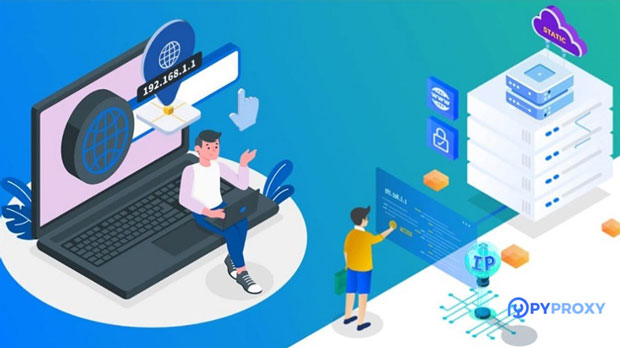In the realm of internet security and privacy, two popular technologies— socks5 proxy and VPN—are often debated. Both serve to protect user privacy, bypass geographical restrictions, and enhance online security, but they differ significantly in how they function and their overall effectiveness. When deciding which is better for daily internet usage, the answer depends on your specific needs, such as speed, privacy, and level of security. This article will compare both options, evaluating their strengths and weaknesses, to help users make an informed decision. Understanding Socks5 Proxy and VPN: A Basic OverviewTo understand which option is more suitable for everyday use, it’s important first to clarify what socks5 proxies and VPNs are and how they work.A Socks5 proxy is a type of internet protocol that acts as an intermediary between the user and the internet. When you use a Socks5 proxy, your connection to the internet is routed through a remote server. It masks your real IP address by providing you with a different one, making it harder for websites to track your online activity. However, it doesn't encrypt your data, which makes it faster but less secure than a VPN.A VPN (Virtual Private Network), on the other hand, is a service that creates a secure, encrypted tunnel between your device and the internet. It routes all your online traffic through its own servers, ensuring that your data is encrypted and your browsing activity remains private. A VPN not only hides your IP address but also protects your data from potential threats such as hackers, public Wi-Fi risks, and surveillance.Key Differences Between Socks5 Proxy and VPNWhile both technologies have their merits, understanding their key differences can help determine which one is more suitable for daily usage.1. Security and PrivacyWhen it comes to security and privacy, the clear winner is the VPN. The primary benefit of using a VPN is that it encrypts your internet traffic. This means that even if someone intercepts your connection, they won’t be able to access your data. On the other hand, a Socks5 proxy does not encrypt your internet traffic. It merely hides your IP address and reroutes your connection through a proxy server. While this can add a layer of privacy by masking your IP, it does not provide the same level of security. Without encryption, any data you send through the proxy could be intercepted, leaving you vulnerable to data theft or hacking.For daily internet usage, especially if you frequently use public Wi-Fi or access sensitive information, a VPN is undoubtedly the better choice for security and privacy.2. Speed and PerformanceIf speed is your primary concern, the Socks5 proxy might be the better option for you. Because it does not encrypt traffic, there is less processing involved, which means faster speeds compared to VPNs. If you're simply browsing the web, streaming videos, or accessing geo-restricted content and don’t require extra security, a Socks5 proxy can offer a better overall performance.However, a VPN can also offer good speed, depending on the provider and the server location you choose. While the encryption does add some overhead, top-tier VPN services use advanced compression techniques and have optimized servers designed for speed. If you use a VPN service with high-speed servers, the difference in speed may be negligible. Nonetheless, if maximum speed is your priority and you don't need encryption, a Socks5 proxy is the faster choice.3. Usability and CompatibilityWhen it comes to usability and compatibility, both technologies are relatively easy to use but serve different purposes.A Socks5 proxy is typically used for specific applications, such as web browsers or torrent clients. It works well for bypassing geo-blocks or hiding your IP address for certain tasks, but its limited functionality means that it doesn't protect your entire internet connection. If you only need to mask your IP for a particular app or service, the Socks5 proxy is a simple and effective solution.A VPN, however, operates at the system level, meaning it covers all your internet traffic, including web browsing, email, file sharing, and more. It is more versatile and ensures complete privacy and security across all applications. For general internet use, where you want a comprehensive solution that secures your entire online activity, a VPN is the more convenient option.4. Anonymity and Bypassing Geo-RestrictionsBoth Socks5 proxies and VPNs can help users bypass geo-restrictions and access content available in other countries. However, the level of anonymity they provide differs significantly.A Socks5 proxy allows you to change your IP address, enabling access to content that may be restricted in your region. However, because it does not encrypt traffic, it doesn’t provide a high level of anonymity. Websites and services might still track your activity via cookies or browser fingerprints.A VPN is a stronger tool for maintaining anonymity because it encrypts all your traffic, making it much harder for third parties to track your activities. This is especially useful for avoiding surveillance, circumventing government censorship, or securely accessing region-blocked content, such as streaming services or news outlets.For users who prioritize anonymity or need to access content in a secure manner, a VPN is the superior option.5. Cost and ValueCost is often a significant factor in choosing between a Socks5 proxy and a VPN. Generally, Socks5 proxies tend to be cheaper than VPNs. You can find proxy services for a lower monthly fee, making it an appealing option if you are on a tight budget and only need to mask your IP for specific tasks.VPNs, on the other hand, are typically more expensive due to the encryption and security features they provide. However, for users who want full protection, the added cost of a VPN is justified. Many VPN providers also offer long-term plans at discounted rates, making them a cost-effective solution for those who require enhanced security and privacy for daily use.Which is Better for Daily Internet Usage?The choice between a Socks5 proxy and a VPN ultimately depends on your needs and priorities.If your main goal is privacy and security, a VPN is the clear choice. It encrypts your data, protects your online activities from surveillance, and provides comprehensive coverage for all internet traffic. This makes it the best option for users who are concerned about their security, especially when using public Wi-Fi or accessing sensitive information.If speed is your priority and you don't need robust security features, a Socks5 proxy may be a better option. It's faster, and for casual browsing or streaming, it provides sufficient anonymity and geo-unblocking abilities. However, if you want complete online protection, the proxy will not meet your needs as well as a VPN.For most daily internet usage, where both privacy and speed are important, a VPN offers the most balanced solution. It provides enhanced security, keeps your online activities private, and can still deliver good speeds with the right provider. In conclusion, while both technologies have their advantages, the VPN is typically the better all-around choice for daily internet usage, especially for users who prioritize security, privacy, and comprehensive online protection.
Dec 24, 2024
![arrow]()


















































